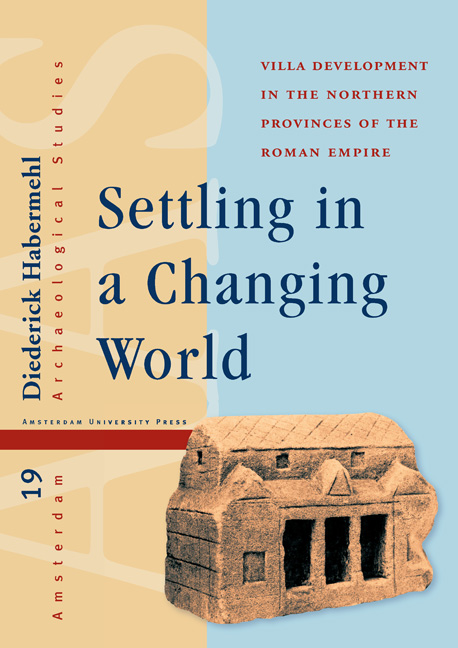Book contents
- Frontmatter
- Dedication
- Contents
- Preface
- 1 Introduction
- 2 Data and Research
- 3 Exploring Villa Development
- 4 Exploring the Social Villa. A Human Approach to Villa Development
- 5 Villa Development and the Organisation of Production
- 6 Settling in a Changing World: A Synthesis
- References
- Appendix 1 Site Catalogue
5 - Villa Development and the Organisation of Production
Published online by Cambridge University Press: 11 December 2020
- Frontmatter
- Dedication
- Contents
- Preface
- 1 Introduction
- 2 Data and Research
- 3 Exploring Villa Development
- 4 Exploring the Social Villa. A Human Approach to Villa Development
- 5 Villa Development and the Organisation of Production
- 6 Settling in a Changing World: A Synthesis
- References
- Appendix 1 Site Catalogue
Summary
This study has so far paid little attention to an important dimension of villa development – agricultural production. This chapter will therefore attempt to elucidate this economic dimension and explore developments in both production and the way it was organised. Once more, the settlement is taken as the main level of analysis. How did the agricultural orientation and organisation of settlements throughout the research region develop over time, also in relation to the organisation of settlement space, building practices and changing social relationships?
From the 1960s in particular, when a growing number of settlements were excavated on a larger scale, the villa was viewed as a production unit, functioning within the newly developing Roman market economy. Slofstra even spoke of an economic ‘villa system’, with villas producing within a specific ‘villa mode of production’. This model views the villa as a specific market-oriented farm, based on a form of dependent labour and focusing on the production of a surplus for sale in the urban market. The thesis of a specific mode of production has played an important part in our understanding of the villa and hence its conceptual definition. Moreover, it has often been linked to the adoption of effective methods to boost productivity, as rationality and efficiency are introduced into production, similar to capitalist production. As emphasised in the previous chapter, studies later moved towards more consumption-oriented approaches, focusing on concepts such as material culture, globalisation and consumerism.
This chapter will once again look at developments in rural settlements between the later Iron Age and the late empire. This time, however, the central theme will be both production and its physical and social organisation. Is it possible to shed light on longer-term developments as well as more radical changes in agricultural production, and how should these changes be understood within the context of the developing Roman provinces? In addition, to what degree can the villa be regarded as a production form, imported from or influenced by the Italic region?
I will attempt to answer these questions by first of all exploring some of the significant broader economic developments that took place within the Roman provinces and that had a dramatic impact on the countryside and its settlements.
- Type
- Chapter
- Information
- Settling in a Changing WorldVilla Development in the Northern Provinces of the Roman Empire, pp. 133 - 156Publisher: Amsterdam University PressPrint publication year: 2013



